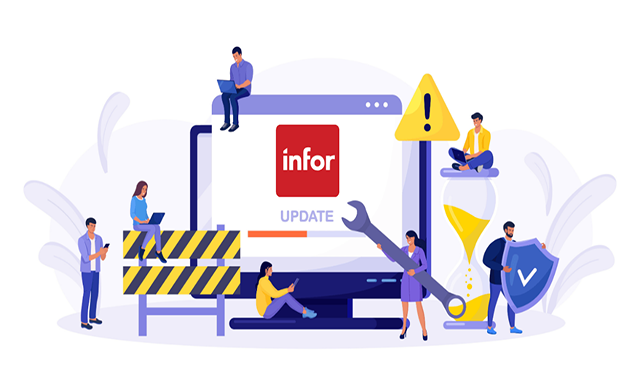The shift to cloud-based ERP systems offers enterprises benefits like reduced capital expenditure and simplified management, but also results in less control over pricing and updates, potentially leading to vendor price increases that clients may feel compelled to accept due to the complexities of migration.
How long ago was your last ERP migration? For many, it’s an event perhaps best left forgotten. The complexity, cost and timescales of migrating to a new vendor are huge, which is one of the reasons it doesn’t happen very often. But as cloud versions of all our favorite ERP systems gain in popularity, we’re seeing an interesting shift in the dynamic between vendor and client that I wanted to share in this blog.
The cloud = control, but for who?
I was chatting with an IT leader in a global firm recently about the trials and tribulations of software migrations. They had recently moved from the on-premise version of their ERP to the cloud-based version, and on the one hand they were enjoying all the benefits that brings them. Their Capex had been reduced, centralized IT management was simpler, and it was far easier to scale resources to match demand. However, they had also realized that their initial contract length – 3 years – really only lasted them the length of the migration itself. Once contract renewal time rolled around, they had realized, their ERP vendor was free to name whatever price increase they wanted, confident in the knowledge that the firm in question would never countenance another migration having only just finished the first one.
It quite neatly encapsulated the shifting dynamic of control that cloud implementations bring to the ERP market. With an on-premise implementation, enterprises had to pay a larger up-front cost and an ongoing, outsourced maintenance contract (or hire an in-house maintenance team) – but the software was theirs, on their servers, and they could do with it what they liked. With the cloud, a few key things have shifted.
In some ways, enterprises have gained control – over the scale of their investment, for instance, and often in the specific modules and features they’ve bought from an ERP vendor. But in other areas they now have much less control. Day-to-day, enterprises have almost zero control over whether they accept updates to their software or not, which is something we’ve talked about extensively on our blog. And despite having more control over how they scale their investment, they’ve actually lost control over the total cost of their ERP.
It shouldn’t be any surprise. The trade-off between Capex and Opex always involved swapping a large, fixed, up-front cost for a smaller ongoing one that can scale up or down with the company’s needs. But, as my conversation with that IT leader reveals, the major drawback of that ongoing cost is that it the per-user price can be increased at the vendor’s discretion – and they know that the complexity of ERP migrations means that very few enterprises are going to be willing to switch provider by the end of their contract – in many cases they’ve only just finished the migration.
So, while enterprises are largely enjoying the benefits of shifting to cloud-based computing, it seems that the industry is waking up to the commercial realities of this arrangement. Namely that they have very few options if their ERP vendor increases their prices other than putting up with it.
What will happen next?
I don’t think there’s any stopping the rise of cloud ERP. Even the massive enterprises out there that have traditionally held on to their on-premise implementations are starting to move to the cloud, either to enjoy its benefits or under the looming threat of maintenance contracts coming to an end.
Neither do I think we should stop the rise of cloud ERP. Its benefits to enterprises are considerable, giving them much more flexibility, control, and security over their IT than on-premise solutions can provide.
Honestly, it’s hard to say how it will play out from here. Will ERP vendors continue to make hay while the sun shines (for them)? Will enterprises become disgruntled enough to vote with their feet and switch back to on-premise ERP, despite the benefits of the cloud? Or will they find a way to make the migration process faster and less painful?
What I do know is that, in our experience at Original Software, up to 60% of the effort (and therefore time) of a software migration is spent in the testing phase. That includes documenting business processes, checking that they still work in the new software, and testing whether users will adopt them or not. So, if enterprises can find a way to improve their testing efficiency during migrations, the power dynamic would shift again. Enterprises would be freer and more confident to migrate ERP more frequently, putting pressure on ERP vendors to be more competitive with their pricing.
What do you think? Learn more with Original Software.






